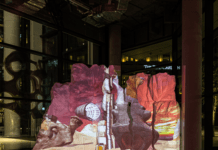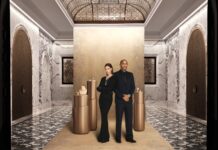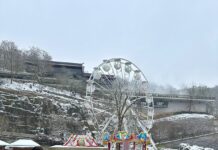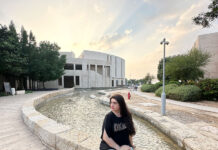Budapest offers marvelous variety, ranging from dramatic history and flamboyant architecture to healing thermal waters and a nightlife that is unrivalled in Eastern and Central Europe. Architecturally, the city is a treasure trove, with enough baroque, neoclassical, eclectic and art nouveau buildings to satisfy everyone. Budapest is also blessed with an abundance of hot springs, an array of bathhouses from the Turkish-era, art nouveau and modern establishments. Here are the best attractions around Budapest.

Royal Palace: The former Royal Palace has been razed and rebuilt at least half a dozen times over the past seven centuries. Béla IV established a royal residence here in the mid-13th century, and subsequent kings added to the complex. The palace was levelled in the battle to drive out the Turks in 1686; the Habsburgs rebuilt it but spent very little time here. At present the Royal Palace contains the Hungarian National Gallery, the Castle Museum, and the National Széchenyi Library.

Parliament: The Hungarian Parliament, also known as the Budapest Parliament, has become one of the city’s main symbols. It is also one of the best-known structures in Europe. It is the third largest assembly building in the world, after the Parliament of Romania and the National Congress of Argentina. Founded between 1884 and 1902, the seat of the National Assembly of Hungary was the biggest building of its time. It has 691 rooms and is 879 ft (268 m) long and 404 ft (123 m) wide. The vastness of the Parliament was a sign of the economic power of Hungary at the beginning of the twentieth century. The most spectacular rooms in the building, include the Staircase XVII, Dome Hall, and The Old Upper House Hall.

Basilica of St Stephen: Budapest’s neoclassical cathedral is the most sacred Catholic church in all of Hungary and contains its most revered relic: the mummified right hand of the church’s patron, King St Stephen.
The basilica contains a treasury of ecclesiastical objects, and houses its main attraction: the Holy Right Chapel, which is also called the Holy Dexter – the mummified right hand of St Stephen and an object of great devotion. It was restored to Hungary by Habsburg empress Maria Theresa in 1771 after being discovered in a Bosnian monastery.

Hungarian National Museum: The Hungarian National Museum houses the nation’s most important collection of historical relics in an impressive neoclassical building, purpose built in 1847. Exhibits on the 1st floor trace the history of the Carpathian Basin from earliest times to the arrival of the Magyars in the 9th century; the ongoing story of the Magyar people resumes on the 2nd floor from the conquest of the basin to the end of communism.
The museum was founded in 1802, when Count Ferenc Széchényi donated his personal collection of more than 20,000 prints, maps, manuscripts, coins and archaeological finds to the state. Highlights include Celtic gold and silver jewelry, a huge 2nd-century Roman mosaic, King St Stephen’s crimson silk coronation mantle, a Broadwood piano used by both Beethoven and Liszt and memorabilia from socialist times.

Liberty Monument: The Liberty Monument, the lovely lady with the palm frond in her outstretched arms, proclaiming freedom throughout the city, is southeast of the Citadella. Standing 14m high, she was raised in 1947 in tribute to the Soviet soldiers who died liberating Budapest in 1945. The victims’ names in Cyrillic letters on the plinth and the soldiers’ statues were removed in 1992 and sent to Memento Park. The inscription reads: ‘To those who gave up their lives for Hungary’s independence, freedom and prosperity’.
The monument had been originally designed by the politically ‘flexible’ sculptor Zsigmond Kisfaludi Strobl (1884–1975) before WWII for the government of Admiral Miklós Horthy. After the war, when pro-communist monuments were in short supply, Kisfaludi Strobl passed it off as a memorial to the Soviets.

Aquincum: The most complete Roman civilian town in Hungary was built around 100 AD and became the seat of the Roman province of Pannonia Inferior in AD 106. Visitors can explore its houses, baths, courtyards, fountains and sophisticated under floor heating systems, as well as a recreation of a Roman painter’s dwelling and Symphorus Mithraeum.
The purpose-built Aquincum Museum, just inside the entrance, puts the ruins in perspective, with a vast collection of Roman daily life objects and wall paintings.
At the museum, a major attraction is the replica of a 3rd-century portable organ called a hydra and the mock-up of a Roman bath. Most of the big sculptures and stone sarcophagi are outside in the park.

Hungarian State Opera House: The neo-Renaissance Hungarian State Opera House was designed by Miklós Ybl in 1884 and is among the most beautiful buildings in Budapest. Its facade is decorated with statues of muses and opera greats such as Puccini, Mozart, Liszt and Verdi, while its interior dazzles with marble columns, gilded vaulted ceilings, chandeliers and near-perfect acoustics.
It was built during the 19th century, Budapest’s glory days, when the city was being reworked into the ‘Paris of the East’. The foyer is where the scale and richness of the Opera House first grabs you. This elegant space features a vaulted roof lifted high on deep-red marble columns, all picked out in white, blue and gold. The marbled grand staircase is just made for ball gowns sweeping up to the circle boxes.
In the auditorium, the Opera House literally shines, the three-tiered circle of balcony boxes is awash with gold, and from the ceiling hangs an enormous glittering chandelier. All around that central point are frescoes, framed in gilt, looking as fresh as when they were first painted. Although the Hungarian State Opera is not the largest opera house, it has the 3rd best acoustics in Europe after the Scala in Milan and the Opera Garnier in Paris. Its best-known piece is The Nutcracker, which has enjoyed unfaltering popularity for years.

















